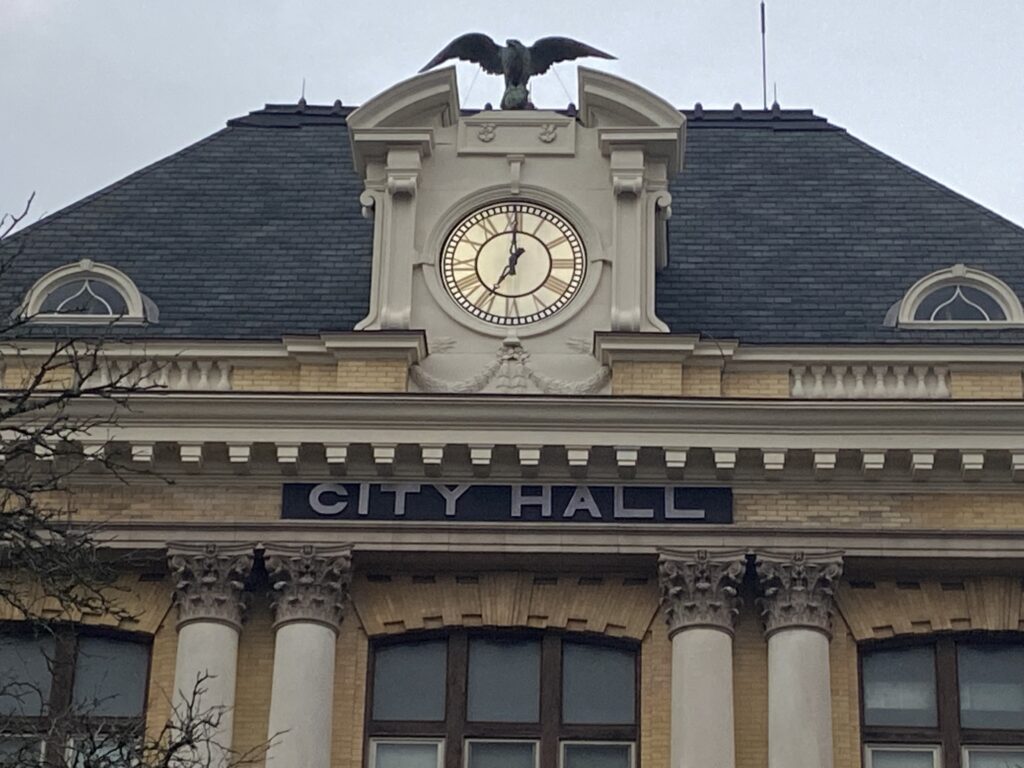City of Glens Falls – Storm Water Separation Making A HUGE Difference!

For decades, the City of Glens Falls has been continuing to protect the environment, preserve its investments, and be good stewards of the environment by removing a significant amount of stormwater being sent to the City’s Wastewater Treatment Plant (WWTP)… These changes to the city’s infrastructure have made a huge difference in the number of bypasses at the WWTP, resulting in a substantially lower amount of overflow into the Hudson River!
“In the last several years, the city has spent more than $17-million separating stormwater from sewer water by installing separate pipes for each purpose,” said Mayor Bill Collins. “This progression of separating sewer lines and storm water lines has made a significant difference, as we’ve seen a 50% reduction in the number of bypasses and an 85% reduction in the total amount of bypassed sewage at the WWTP into the Hudson River… Even if a bypass is required, WWTP blends bypassed sewage with treated effluent, and our impact on the Hudson River is minimal and very difficult to measure.”
“The number of bypasses continues to depend on the amount of precipitation during the year and the intensity of a rain event,” said Bill Norton, Superintendent of the Water and Sewer Department. “Glens Falls and the surrounding area have experienced an increase of intense rain events over the last couple of years… When we receive a large amount of rain in a short period of time, the result is the collection system experiencing a rapid increase in flow, that peaks and then quickly dissipates. When the rainfall intensity exceeds 0.1 inches within 15 minutes, or exceeds 0.2 inches in five minutes, a bypass event is most likely to happen… Conversely, rain events that have been spread out over four hours or more while also receiving up to an inch of rain have not resulted in any bypass issues.”
“The number of bypasses and the amount of sewage overflow during an intense rain event continues to decrease as we improve our system through this separation program,“ continued Norton. “The removal of storm water and ground water flow from infiltrating the collection system has allowed the WWTP to reduce daily flow and improve the amount of sewage treated… That’s even while additional tributary sewage flow has been added from the Town of Queensbury, the Village of South Glens Falls, and the Town of Moreau. These three ‘Tributary Communities’ contribute about 32% to the City of Glens Falls WWTP daily flow.”
“Additional efforts to reduce the storm water impact on the sanitary sewer line have been made by using bioretention basins, rain gardens, and dry wells to collect the runoff and allow the water to seep into the ground after receiving any amount of rainfall,” stated Collins. “The City of Glens Falls has concentrated on separating the combined sewer systems while performing road construction and repair projects. I know the Planning Board is paying particular attention to stormwater management on any building permits submitted, and those efforts are playing out now in the oldest part of the city – including South Street, Broad Street, Elm Street, Warren Street, Glen Street, Bay Street, Ridge Street and Hudson Avenue.”
If you would like any additional information, or if you would like to discuss the stormwater management program with the Glens Falls Water and Sewer Department staff, please contact the office during regular business hours at (518) 761-3850. Otherwise, for more information regarding this or any other issue, please reach out via email at communicationsdirector@cityofglensfalls.com, or tdrawbridge@cityofglensfalls.com. If your issue is urgent or if you’re looking to speak with Mayor Collins regarding a formal comment, please call (518) 920-4884.